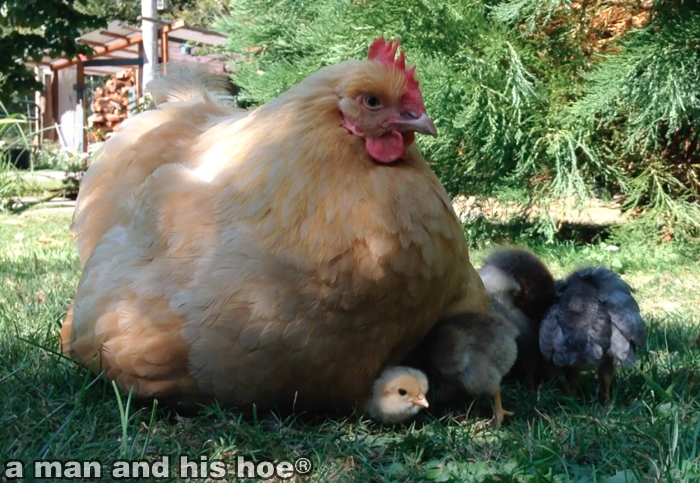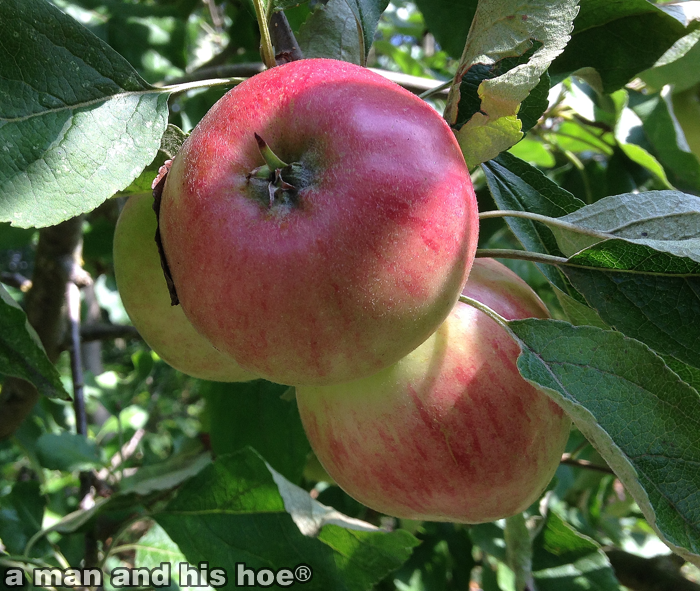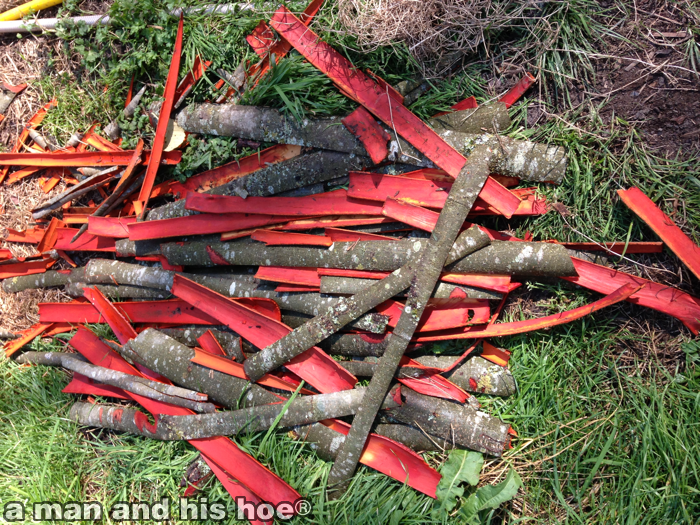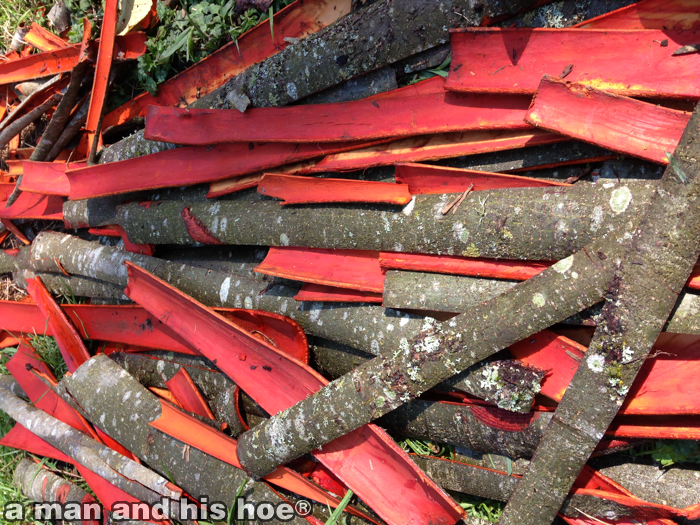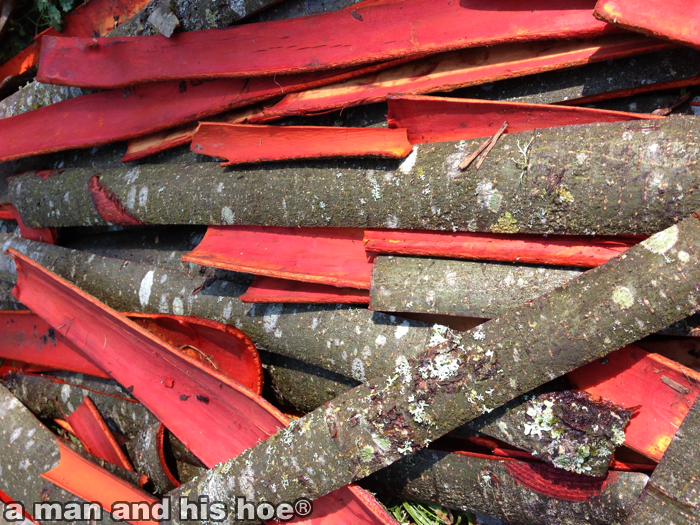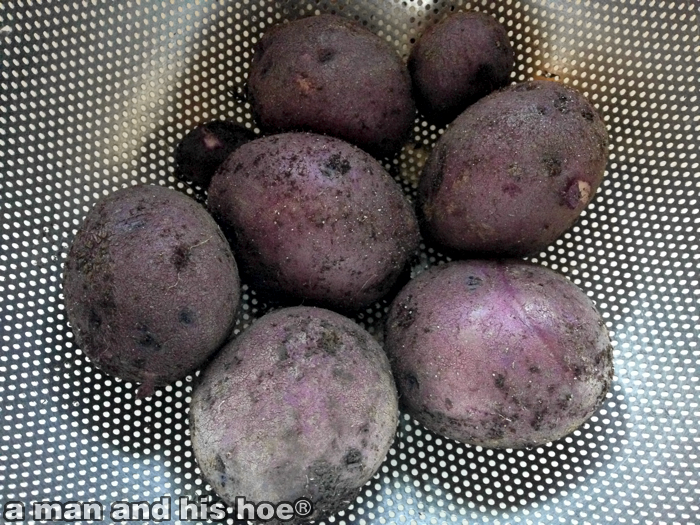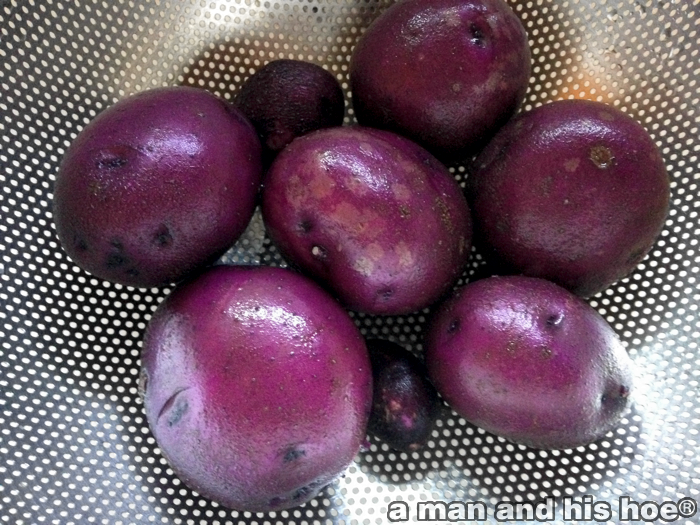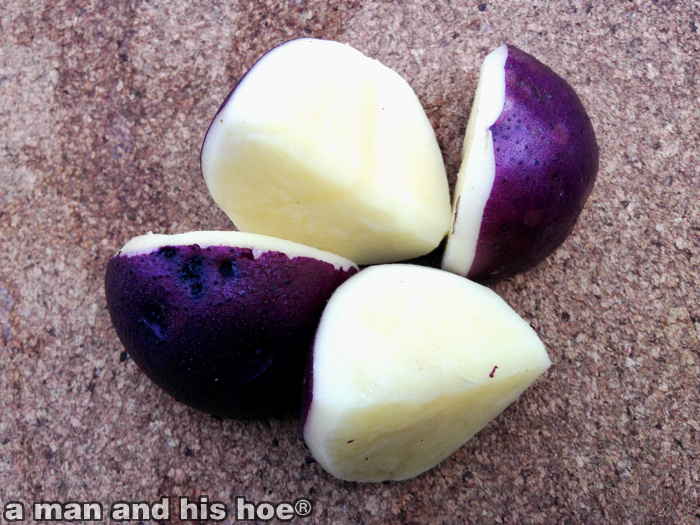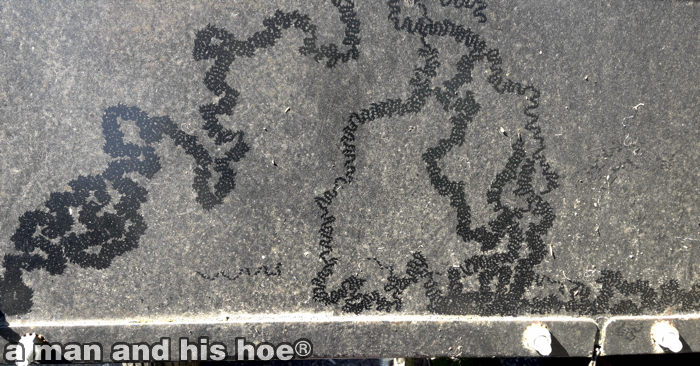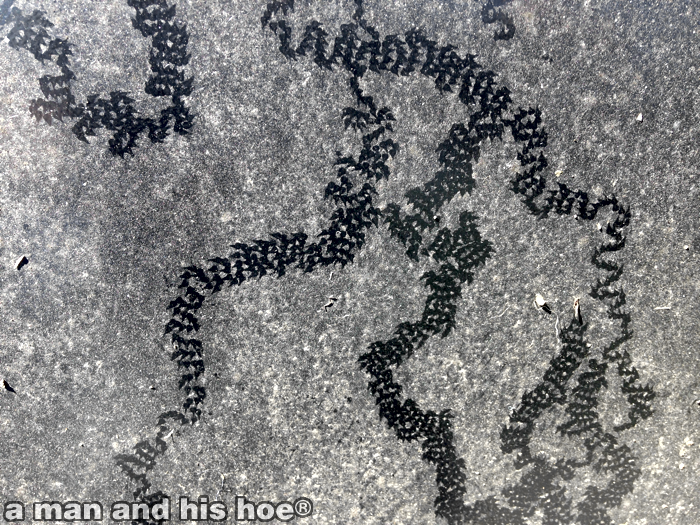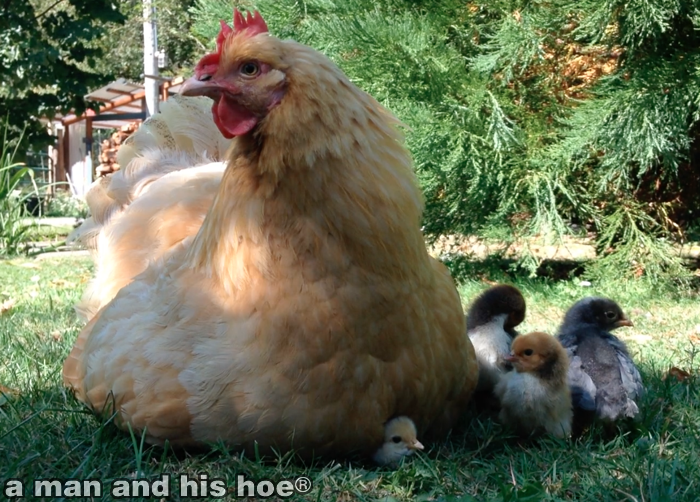
This afternoon, when I went out to collect eggs and check on the chickens, I spotted a hen with chicks taking an afternoon break in the shade of a mimosa tree. The chicks were just a few days old and it wasn’t one of the hens sitting on eggs in the coop. It was a hen who had hatched her chicks in the brush somewhere and was bringing her chicks around for food and water for the first time.
Recently, there had been a hen who acted very broody when she came into the chicken yard to feed, but I never did see her sitting on eggs. Now I know why. She had a clutch of eggs in the brush or woods somewhere. It makes me wonder how many other hens will come popping out of the woods with chicks in tow.
